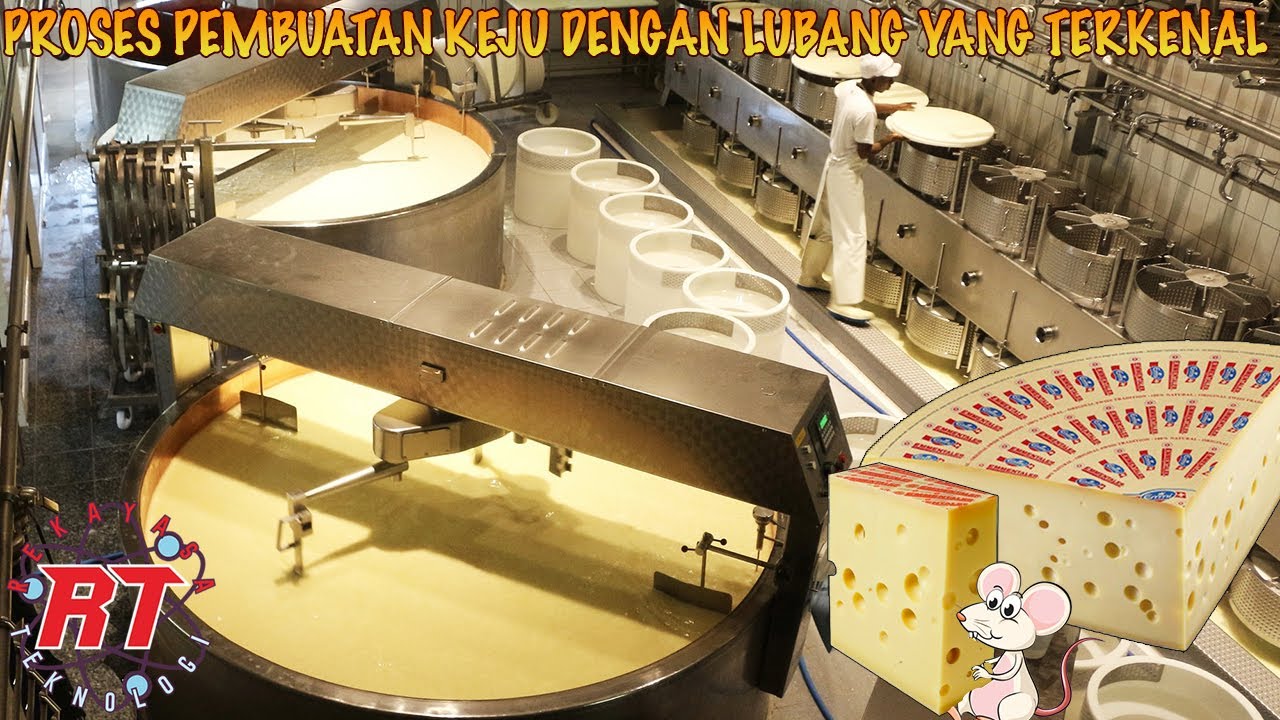The real reason cheese is yellow
Summary
TLDRThis video delves into the intriguing history of cheese color, particularly the differences between sheep and cow's milk cheese. It explains how the natural diet of these animals affects milk and, consequently, cheese production. While sheep's cheese remains white due to metabolic differences, cow's milk cheese often has a yellow hue from concentrated beta carotene. Over centuries, cheesemakers began dyeing cheese to enhance its visual appeal, using natural colorants like annatto. Today, despite changing farming practices, the expectation for vibrant cheese persists, allowing consumers to choose between dyed and naturally colored options.
Takeaways
- 🧀 Cheese color has historical roots in the type of milk used, with cow's milk producing yellow cheese due to beta carotene.
- 🐑 Sheep cheese is typically white because they do not transfer beta carotene from grass into their milk.
- 📈 In the 12th and 13th centuries, sheep were the primary milk producers, but cows became more prevalent over time.
- 💰 Cheesemakers shifted their focus to maximize profits, often skimming cream for butter, which affected cheese color.
- 🌼 Natural colorants like saffron and marigold were initially used to dye cheese before the introduction of annatto.
- 🌎 Annatto seeds, imported from South America by Dutch traders in the 1600s, became a popular and cost-effective cheese dye.
- 🎨 The use of vibrant colors in cheese has persisted due to consumer expectations and marketing practices.
- 🌱 Factory farming has changed cow diets, leading to less grass-fed milk, but marketing still promotes colorful cheese.
- 🛒 Grocery stores offer a variety of cheeses, including dyed and undyed options, allowing consumers to choose based on preference.
- 🧀 Grass-fed cheddar can have a natural tint from beta carotene, providing a middle ground for consumers seeking authenticity.
Q & A
What is the main topic of the video?
-The video discusses the historical and biological reasons behind why a lot of cheese is orange, focusing on the role of beta carotene in milk from different animals.
How do cows and sheep differ in their cheese production regarding beta carotene?
-Cows process beta carotene from grass into their milk, which contributes to the yellow color of cow's milk cheese. In contrast, sheep do not transfer beta carotene to their milk, resulting in naturally white sheep cheese.
What historical changes influenced people's perception of cheese color?
-As cheese production shifted from sheep to cows, people began to associate yellow cheese with higher quality, influenced by the presence of beta carotene in cow's milk.
What marketing strategies did cheesemakers use to enhance the appearance of cheese?
-Cheesemakers dyed cheese to mimic the rich color associated with beta carotene, using natural colorants like saffron and marigold, but later shifted to using annatto seeds for a more vibrant and cost-effective solution.
What is annatto and why did it become popular among cheesemakers?
-Annatto is a natural colorant derived from the seeds of a shrub native to South America. It became popular due to its superior coloring properties and lower cost compared to other colorants like saffron and carrot juice.
How did the introduction of factory farming affect cheese production?
-Factory farming has led to cows being less grass-fed and consuming more corn and soy, but consumer expectations for colorful cheese have remained high, perpetuating the use of artificial colorants.
What are some examples of cheeses that use annatto?
-Cheeses such as Gouda, Cheshire, and cheddar often use annatto to achieve a rich yellow color, mimicking the appearance of cheese made from high-quality spring milk.
What does the video suggest about consumer preferences regarding cheese color?
-The video indicates that consumers have been conditioned to expect cheeses to be brightly colored, regardless of the actual nutritional content or natural coloring from the milk used.
Are there variations in cheddar cheese available in grocery stores?
-Yes, in grocery stores, consumers can find both yellow dyed cheddar and undyed white cheddar, with some specialty shops offering grass-fed cheddar that is naturally tinted with beta carotene.
How does the video link cheese color to broader themes of marketing and consumer behavior?
-The video illustrates how marketing strategies have historically shaped consumer perceptions and expectations around cheese color, influencing purchasing decisions based on visual cues rather than actual quality or taste.
Outlines

This section is available to paid users only. Please upgrade to access this part.
Upgrade NowMindmap

This section is available to paid users only. Please upgrade to access this part.
Upgrade NowKeywords

This section is available to paid users only. Please upgrade to access this part.
Upgrade NowHighlights

This section is available to paid users only. Please upgrade to access this part.
Upgrade NowTranscripts

This section is available to paid users only. Please upgrade to access this part.
Upgrade NowBrowse More Related Video

Ternyata Begini Cara Membuat Keju Boyolali | RAGAM INDONESIA (11/07/19)

Kepoin Proses Pembuatan Keju Susu Sapi Khas Australia | SI UNYIL (30/10/20)

CARA MEMBUAT KEJU | MENGAPA KEJU BERLUBANG?

What Is A2 Milk? – Dr. Berg

PROSES PEMBUATAN KEJU SWISS EMMENTALER YANG TEKENAL DENGAN LUBANG KEJU YANG UNIK

Making American cheese to debunk a conspiracy
5.0 / 5 (0 votes)